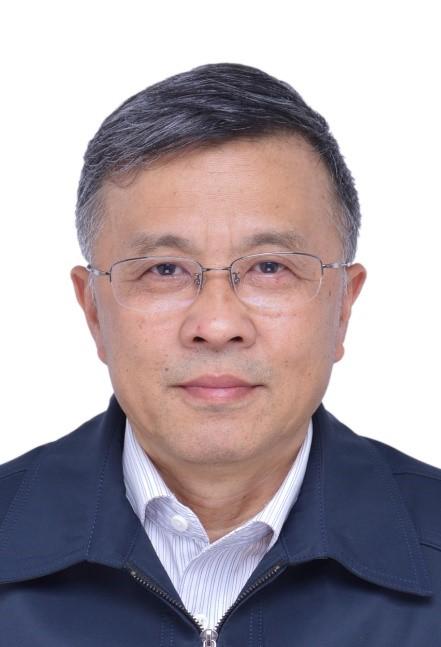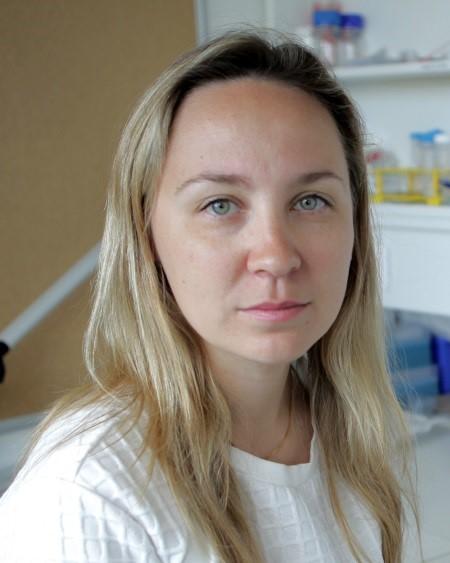Session 1: Emerging Materials 1
Davide Deganello
Swansea University, UK
Through development of novel functional materials and advanced fabrication processes, functional printing offers exciting opportunities for the development of next-generation biomedical and electronic devices from large-area applications to higher resolution custom applications. Development of high resolution printing, such as by direct-write aerosol jet printing, provides new opportunities of hybrid integration between printed electronics and conventional silicon technologies. The presentation will focus on the “Printed-Sensor-on-Chip” platform and its fabrication challenge: thin film sensors accurately fabricated by AJ printing over the top surface and sides of an IC chip. Verified for humidity testing, the concept is envisaged to work as a platform for a wide range of applications, fromsignal processing, bio-sensing to energy storage.
Session 2: High-thoughput manufacturing
"An Advanced Application of Photonic Curing Tools: Photonic Soldering"
Kurt Schroder
NovaCentrix, USA
Photonic curing as a non-equilibrium heating process has been widely established as suitable for printed electronics applications such as drying and sintering metal-based electrically-conducting inks, annealing CIS photovoltaic materials, and processing other coatings on structures that cannot withstand the high thermal load of a conventional oven. Photonic curing is likely to continue to enable innovation in processing coated thin films for applications ranging from displays, sensors, energy storage, and other applications of flexible-hybrid electronics (FHE). Importantly, new applications are being developed that take advantage of the advances in photonic curing tool capabilities. This talk will focus on a recent development called photonic soldering.
The development of flexible hybrid electronics requires an inexpensive, reliable and high throughput attachment technique for functional components onto printed circuits. The challenge faced with the current reflow technology is that many of the desired substrates cannot withstand the necessary temperatures required to reach the liquidus point of common solders. To overcome this limitation, conductive adhesive attachment techniques were developed but they lack the reliability of soldering. To circumvent the stated challenge posed by the substrates, a photonic soldering technique has been developed that takes advantage of the selective absorption of light to reach the liquidus temperature of conventional solders without significant heating of the underlying substrate. The short time the substrate spends at elevated temperatures may not be sufficient to damage the underlying substrate. This technique could work with conventional lead-free solders (e.g. SAC-305) and commercial packages (e.g. 402MM) or bare thinned dies on a variety of substrates, including PET, PEN as well as metallic foils. The photonic soldering technique is feasible for integration into high throughput roll-to-roll or sheet-to-sheet setups in a compact package using significantly less energy as the time to solder is only a few seconds versus several minutes for conventional reflow technology.
Session 3: Sensor devices and architectures
"Detectors and light-sources for optical spectroscopy: from 3D-printed light-sources to self-powered sensors fabricated on polymeric substrates, and from there on to IoT-enabled smart systems"
Vassili Karanassios
University of Waterloo, Waterloo, Ontario, Canada
We are developing detectors to sense the visible part of the spectrum. We are also developing light-sources that generate spectral signals from micro-samples introduced into battery-operated micro-plasmas. The microplasmas are coupled to a portable, fiber-optic spectrometer and this combination (or system) can be thought of as a “multi-parameter sensor” for the UV and the Vis parts of the spectrum. Initially, our Micro Plasma Devices (MPDs) were fabricated using technologies borrowed from the semiconductor industry (e.g., photolithography and micromachining). To reduce fabrication costs and to enable rapid prototyping, we fabricated Micro Plasma Devices using 3D-printing of polymeric materials. We also fabricated (and continue to characterize) a relatively-inexpensive self-powered detector on a flexible polymeric substrate. The detector responds in the visible part of the spectrum. To enable portability for chemical measurements on-site (i.e., in the field) we often used a smartphone for data acquisition and signal processing, thus enabling sensor-systems to be placed on the Internet of Things (IoT) and, potentially, to be employed in Society 5.0 applications. To further facilitate use on-site (i.e., in the field), portable spectrometers with a short focal length must be used. But as spectrometers get smaller, spectral overlaps (often called spectral interference effects) arise. To address them, we employed Artificial Intelligence (AI) methods using Artificial Neural Networks (ANNs) and Deep Learning approaches, thus (in many respects) making sensor-systems smarter. In this presentation, such developments will be described in some detail and future prospects will be outlined.
Session 4: Low power and hybrid systems
"Bespoke Machine Learning Processor Development Framework on Flexible Substrates "
Emre Ozer
Arm Research, Cambridge, UK
This paper proposes a framework for the design of bespoke machine learning (ML) processors on flexible substrates (e.g. plastic) to address an important need in flexible and wearable applications – a processing engine of the flexible electronics applications. The proposed framework automates the design of bespoke ML processors on flexible substrates to reduce development time, and therefore the time-to-market.
Session 5: Disposable and implantable systems
"Human gas sensing capsules for diagnosing gut disorders "
Kourosh Kalantar-Zadeh
University of New South Wales, Sydney, Australia
Ingestible sensors are rising as the next most important medical devices for monitoring of human disorders, providing invaluable information regarding different biomarkers of the gut. In this talk, the history of the development of ingestible gas sensing capsules will be presented. This gas sensing capsules have applications in diagnostics of gut disorders and assessing dietary impacts. These capsules leave the body after normal bowel transient and, during this time, transmit information about the gas profiles in different segments of the gut. The capsules consist of gas sensors, electronic circuits, small-sized harmless batteries and telecommunication components that operate within a safe commercial band. The capsules allow accurate measurement of the concentrations of vital gases of O2, H2 of CO2 and also temperature. Animal and the first phase of human trials have been successfully completed and the public domain available outcomes of these trials will be presented in the talk. The observed phenomena using the capsule can potentially revolutionise fields of gastroenterology and food sciences.
Session 6: Emerging Applications 1
"Low power CMOS inverters based on printable inorganic thin-film transistors"
Zheng Cui
Printable Electronics Research Center, Suzhou Institute of Nanotech and Nanobionics, Chinese Academy of Sciences, Suzhou, China
Low power electronics are typically achieved by CMOS circuits which require both p-type and n-type transistors. However, making CMOS electronics with solution type semiconductors has met great difficulties because no printable semiconductor materials are good at both p-type and n-type. In this paper, we demonstrated two approaches which enabled printable CMOS inverters with low static power consumption. One approach was to tune the polarity of as-printed p-type carbon nanotube (CNT) thin-film transistors (TFT) into n-type, so that a CMOS-like inverter can be constructed by two CNT-TFTs which has achieved low power consumption of 0.3 μW. Another approach was to combine a p-type CNT-TFT with a n-type metal oxide TFT to construct a CMOS inverter which demonstrated low power consumption of 0.4 μW. Both approaches were based on solution type inorganic semiconductor materials and therefore printable, which lay the foundation for printed low power electronic circuits.
Session 7: Emerging Materials 2
"Nanostructured films and polymer composites of Graphene and Two-dimensional Materials: electrical and mechanical properties and applications in wearable electronics"
Dr. Felice Torrisi
Molecular Science Research Hub, Department of Chemistry, Imperial College London, UK
Graphene and related 2D materials (GRMs) hold a great potential for flexible electronics and photonics for their novel electrical and optical properties, ideal for new lasers and wearable electronics. [1]. The production and deposition of thin films of GRM (fig.1a) from solutions or inks is extremely attractive for printed electronic devices, viable for flexible electronics. [2] GRM-based inks enable a large range of printed device and integration options, such as digital, lithographic printing and roll-to-roll coating, which are ideal to deposit patterned thin films. The exfoliation in liquid of layered bulk materials (such as graphite, MoS2 crystals, etc.) is a scalable approach ideal to produce inks. However, currently the low yield of this process, results in a low concentration of dispersed GRMs. I will give a brief overview on the development of high-yield production GRM-based solutions and inks, suitable for several priting processes enabling GRM-based printable and flexible (opto)electronic devices. [3]. Then I will show how careful tuning of the surface interaction and GRM deposition process enables printed electronic and optoelectronic devices [4] from 2D material inks (fig.1b), such as Thin Film Transistors achieving electron mobility > 100 cm2 V-1 s-1 at room temperature. [5] Finally, I will demonstrate how the biocompatible properties of graphene [6] and are suitable as neuron-interfacing electrodes, (fig.1c) preserving the neuronal activity. This paves the way to the fabrication of flexible graphene-based devices on plastics or textiles for medical applications, (fig.1d) such as biosensors and neuroprosthetics, whereby graphene electrodes interact efficiently with the cells without altering the cells behaviour [6].
Session 8: Modelling and simulation
"Design of bendable high-frequency circuits based on short-channel InGaZnO TFTs"
Niko Münzenrieder
Sensor Technology Research Centre, University Of Sussex, UK
Conformable systems operated in close proximity to the human body, or fabricated on large-area plastic substrates enable new applications including smart implants, and electronic textiles. A unique requirement of flexible systems is the need to optimize their electrical and mechanical performance simultaneously. In particular, flexible sensor conditioning and transceiver circuits, insensitive to bending, are required. Thin-film transistors (TFTs) based on amorphous InGaZnO have the potential to enable such circuits. However, while InGaZnO TFTs can be fabricated on temperature sensitive plastic foils, provide carrier mobilities >10 cm2/Vs, and demonstrated functionality when bent to radii as small as 25 μm, they also suffer from certain limitations: First, only n-type devices are available which restricts the number of possible circuit topologies. Second, the electrical performance parameters shift when the TFTs are exposed to mechanical strain. Third, the use of flexible free-standing substrates requires fabrication tolerances complicating the realization of small features essential for fast transistors. Finally, a trade-off between the parasitic overlap capacitance and contact resistance is required as these parameters determine the TFT’s frequency performance, but cannot be minimized at the same time.
Here, the scaling behaviour of flexible InGaZnO TFT is modelled to enable the realization of optimized high-speed transistors. The model is validated using AC measurements of flexible TFTs with channel length down to 300 nm, and enabled the fabrication of TFTs with transit frequencies of 135 MHz, and maximum oscillation frequencies of 398 MHz. In a next step, circuit design principles and SPICE simulation models for the design of InGaZnO TFT circuits, considering electrical and mechanical effects, are presented. These led to various circuits such as fully flexible amplifiers with a gain-bandwidth-product >9 MHz.
Session 9: Energy harvesting and storage systems
Stephen Beeby
Head of Smart Electronic Materials and Systems Group, University of Southampton
Abstract coming soon
Session 10: Emerging Application 2
"Engineering organic electronic materials for the development of smart textiles"
Esma Ismailova
Department of Bioelectronics, Ecole Nationale Superieure des Mines de Saint Eitenne, CMP-EMSE, MOC
In the 21st century, consumers are rapidly gaining access to a novel suite of wearable electronic devices such as smart watches, glasses and garments. These technologies promise both comfort and ease of use, as well as an access to a wealth of health-related information. Advances in the field of electronic textiles, and recent achievements in organic electronics, have enabled the development of new flexible and conformable technologies that can perform the same sensing as current solid-state devices, for a fraction of the cost. Such progress relies on the subtle engineering of organic materials to model their properties in functional devices. The sustainable potential of using organic ionic and electronic conducting materials in wearable monitoring systems has yet to be demonstrated. In cutaneous applications, the use of such organic materials as electrodes lowers contact impedance with the skin resulting in higher quality recordings compared to metal–based electrodes. Combining these materials with textile structures reduces the mechanical mismatch at the interface with the skin, which enables the recording of electrophysiological activities for long time intervals with an enhanced signal to noise ratio. Traditional and non-traditional direct patterning techniques allow the selective deposition of organic materials onto different kind of fabrics. Therefore, the integration of organic electronics and the textile platform provides low-cost and tailored solutions in interfacing smart devices with the human body.

















.png%3Fitok=Dhuteb14)
.png%3Fitok=0SdOmfTv)
